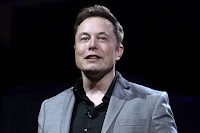At first glance, Elon Musk’s plan to have electric vehicle-maker Tesla, of which he is the CEO, chairman, and largest shareholder, acquire solar developer SolarCity, of which he is the chairman and largest shareholder, is a head-scratcher. The sense of puzzlement only grows at a second glance.
Musk announced the plan on Tuesday with an SEC filing and a conference call with reporters. He said the purchase would “complete the picture” for Tesla, which is investing at least $4 billion to build a mammoth factory for lithium-ion batteries. Musk claims that combining his automaker’s energy storage business with his solar power company would unlock new efficiencies and opportunities for both businesses.
Yet neither company is profitable. Tesla lost nearly $900 million in 2015 (up from $294 million in 2014), while SolarCity lost almost $769 million, doubling its 2014 losses. Uniting two companies with combined annual losses of more than $1.6 billion is not a classically sound business strategy.
Musk “has garnered attention for unusual financial maneuvers to support his companies,” The Wall Street Journal deadpanned.
What’s more, the idea of combining solar power with automaking is a bit like Ford Motors buying ExxonMobil—if both were losing hundreds of millions a year.
SolarCity, the largest installer of solar power in the U.S., has been hard hit by turmoil in the market for residential solar power. Despite the extension of the investment tax credit for solar installations and forecasts of rapid expansion of solar capacity in the coming year, the company has struggled to turn its lease-based residential business into a profit-making venture. Before today’s announcement SolarCity’s share price had lost 64 percent of its value in the last 11 months.
Read more at Elon Musk’s Bonkers Plan to Join Tesla and SolarCity

No comments:
Post a Comment